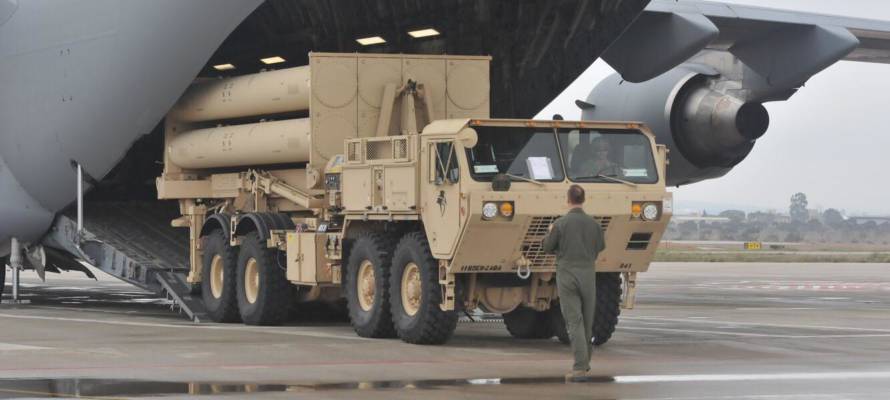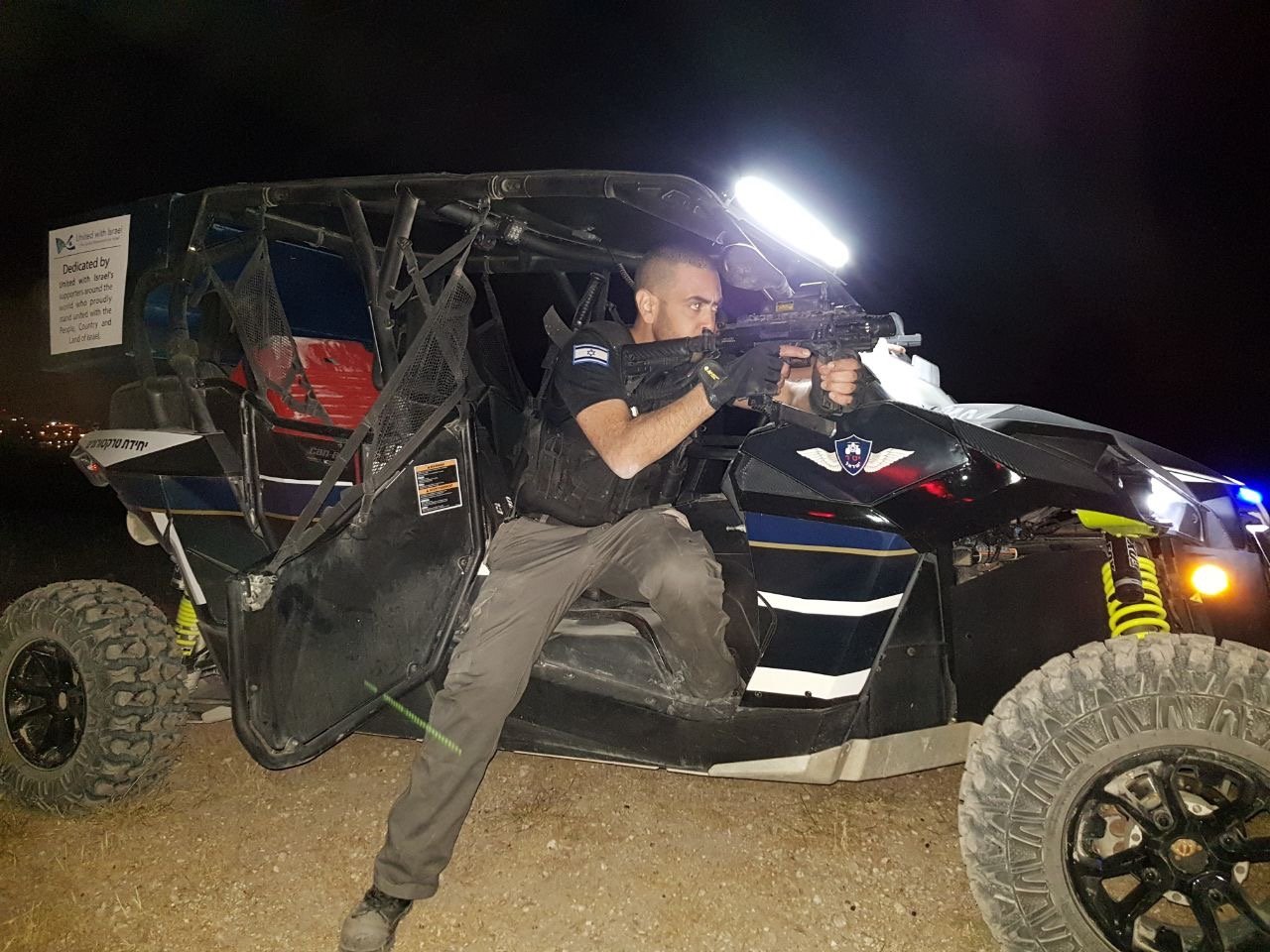Iran has hundreds of ballistic missiles in its arsenal, while its proxy, Hezbollah, has an estimated 130,000 projectiles.
By Yaakov Lappin, JNS
All of Israel’s future conflicts will see major enemy fire on the civilian home front, meaning that air defense is more crucial than ever, a former Israel Air Force chief has told JNS following the start of an Israeli-American joint exercise.
In recent days, the Israel Defense Forces and the U.S. military’s European Command (EUCOM) announced that for the first time, the United States has brought over its Terminal High Altitude Area Defense (THAAD) system to Israel.
The unprecedented move is part of a drill testing the ability of American forces to quickly arrive in Israel and help the IDF protect the country from incoming ballistic-missile attacks. The exercise could be seen as a signal to Iran and its proxies of Washington’s commitment to help Israel defend its air space in the event of a future war.
Iran has hundreds of ballistic missiles in its arsenal, while its proxy, Hezbollah, has an estimated 130,000 projectiles, including long-range rockets and missiles that can strike any point in Israel.
Maj. Gen. (ret.) Eitan Ben-Eliyahu, who commanded the IAF from 1996 to 2000, told JNS that “from here on out, in any combat scenario, whether it is local or regional, there will be widespread use of rockets and missiles [by the enemy]. Even if the IDF conducts a highly successful offensive strategy, this will not be sufficient to suitably protect the fighting forces, and it especially will not suitably protect the home front. Hence, there is no choice but to combine between offense and active defense at the same time.”
Ben-Eliyahu assessed that future significant wars would involve “the formation of coalitions between countries,” and that this required their militaries to practice working together on air defenses.
Mounting a joint defense requires close coordination and an ability to integrate several defensive systems, he explained.
“Therefore, it is not enough to hold joint drills as we have seen in the past, in which the coordination is limited to cooperation between planes in the air,” said Ben-Eliyahu.
One of the key goals of the exercise is to integrate THAAD with Israel’s own air-defense systems, including the Arrow 3 system that intercepts ballistic missiles in space, the Arrow 2 system for upper atmosphere interceptions, David’s Sling for a range of intermediate-range threats and the Iron Dome short to medium-range air-defense system.
This integration of systems should become a full combat doctrine, Ben-Eliyahu argued, allowing American air-defense units and Israel’s Air Defense Array to work together at all levels.
Ben-Eliyahu said that in light of the Trump administration’s recent policy of withdrawing armed forces from the Middle East, “it is comfortable for it to fill the vacuum by exhibiting a defensive, rather than offensive presence.”
Like Israel’s Arrow 3, The THAAD system can send its interceptors into space to collide with and destroy ballistic missiles. It can also hit them inside the atmosphere.
A Rapid US Deployment
IDF Spokesman Lt. Col. Jonathan Conricus told reporters this week that the purpose of the exercise is to drill the America’s “rapid deployment across the globe and to enhance cooperation between the IAF and U.S. air-defense systems.”
He added that the “deployment emphasizes the U.S.’s commitment to the defense of Israel.”
Last month, the IDF and U.S. military’s EUCOM held the joint Juniper Falcon exercise, testing their ability to work together.
“We are working in cooperation with our U.S. counterparts to strengthen our ability to defend Israeli air space,” confirmed Conricus.
The latest drill is “an opportunity to practice the integration of advanced American air-defense systems into the IAF Air Defense Array. Needless to say, we are grateful for this exercise. The IDF stands ready to protect the air space against threats near and far,” he stated.
Conricus stressed that the exercise is defensive and was planned ahead of time. The United States flew in personnel and equipment from Texas and Italy to Israel, including more than 200 soldiers and officers. The full THAAD system, including its radar and launchers, arrived at an Israeli airbase in southern Israel before being transported on the ground for deployment to an undisclosed location in the south of the country.
Last year, the IDF and U.S. held the biannual Juniper Cobra ballistic-missile defense exercise, which simulated threats, but did not see the arrival of THAAD.
Conricus said past exercises did not include the kind of actual tactical cooperation between soldiers, airmen and marines that is currently taking place, affirming that “we are going to … ensure our readiness for the future.”
Life-Saving ATVs Stop Terrorists Before they Attack Innocent Israelis
Palestinian attackers have terrorized Israelis with stabbings, shootings, bombings and car-rammings throughout Israel, with no end in sight.
Specialized, state-of-the-art, compact, all-terrain ATVs that maneuver in tight spaces are Israel’s “secret weapon,” designed to pursue and capture terrorists BEFORE they attack. Life-saving ATVs are desperately needed to protect communities throughout Israel. Please donate generously!

